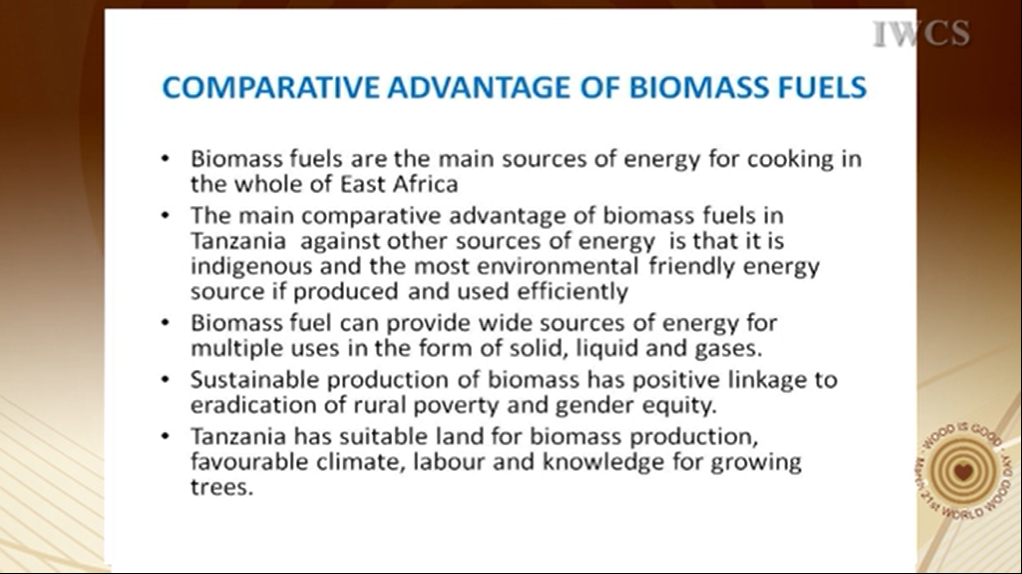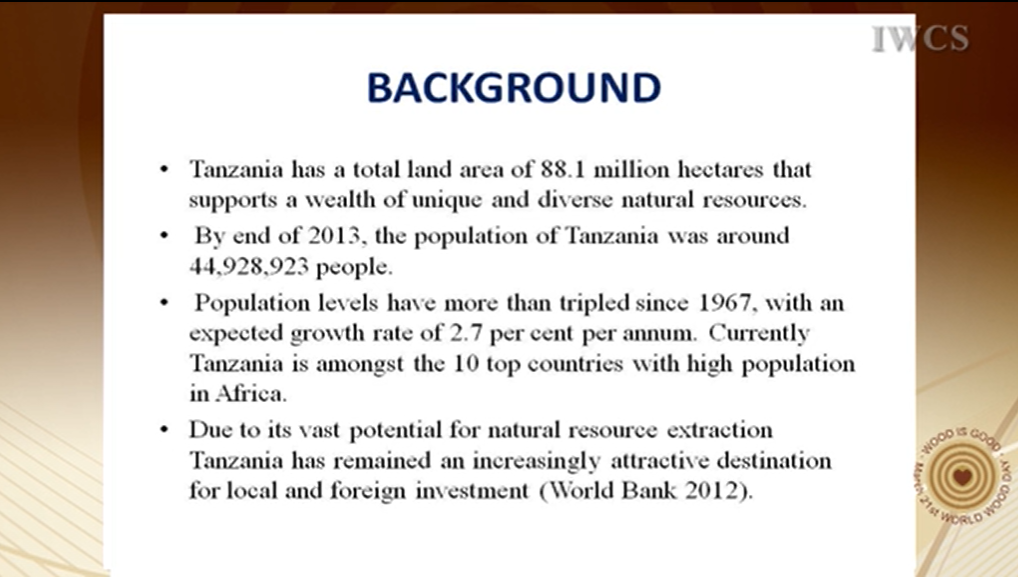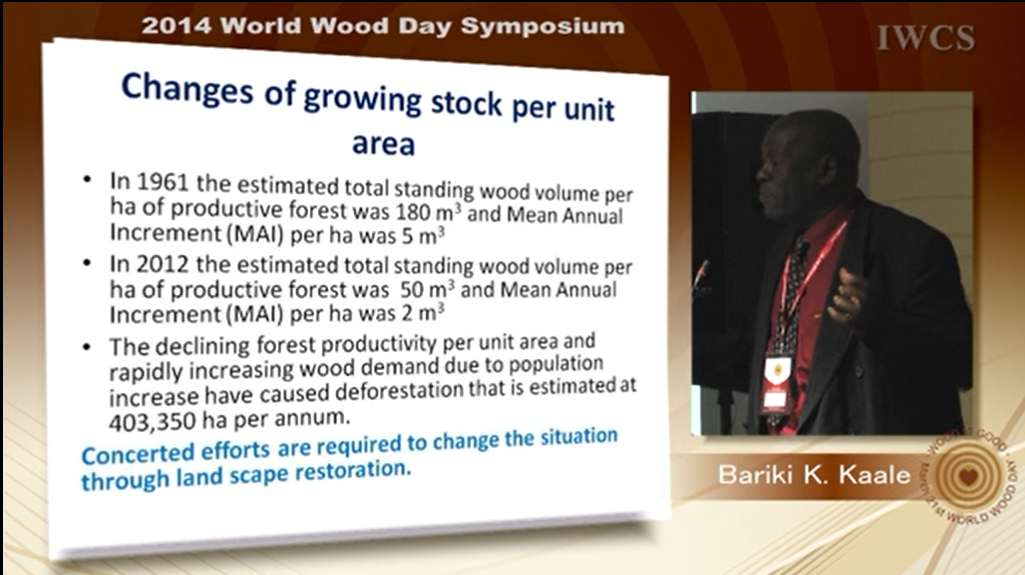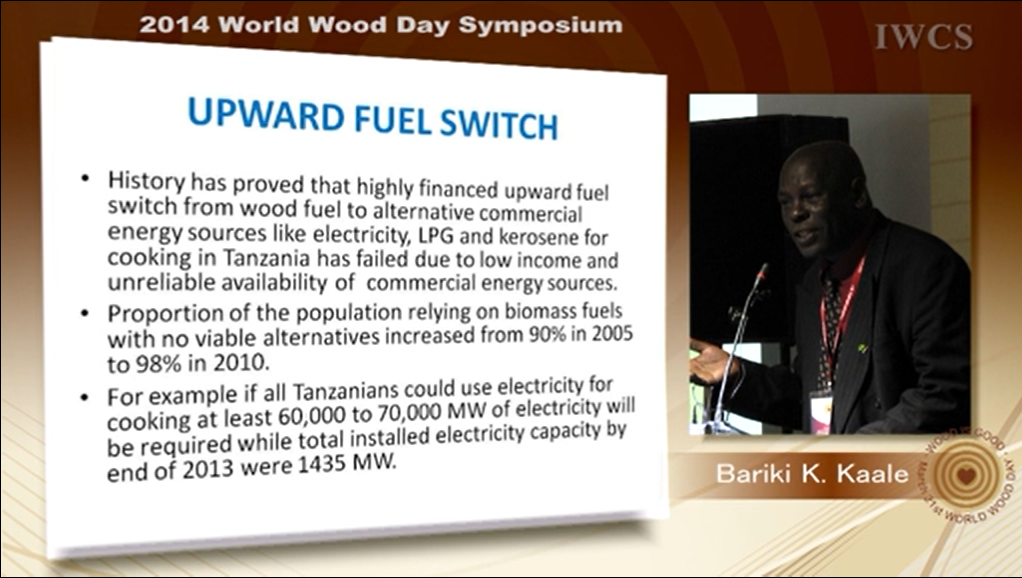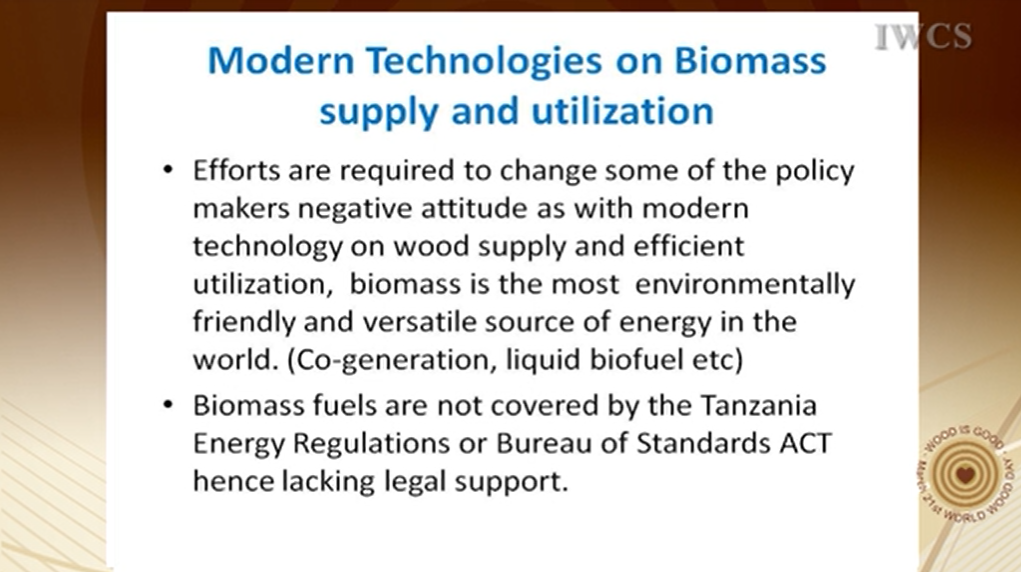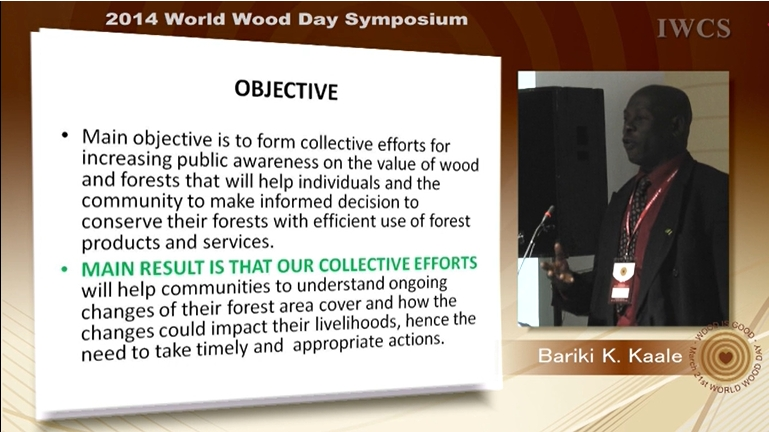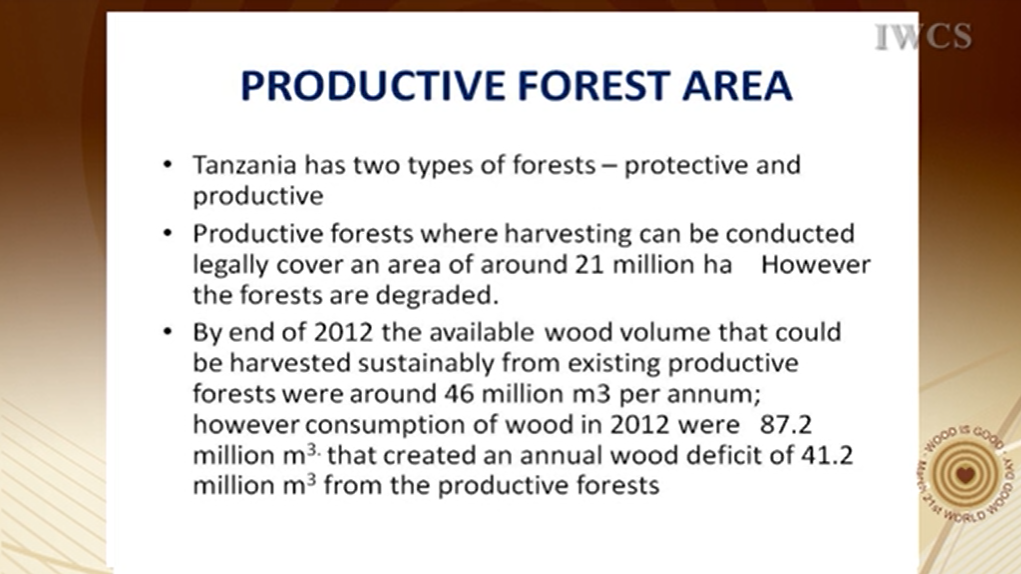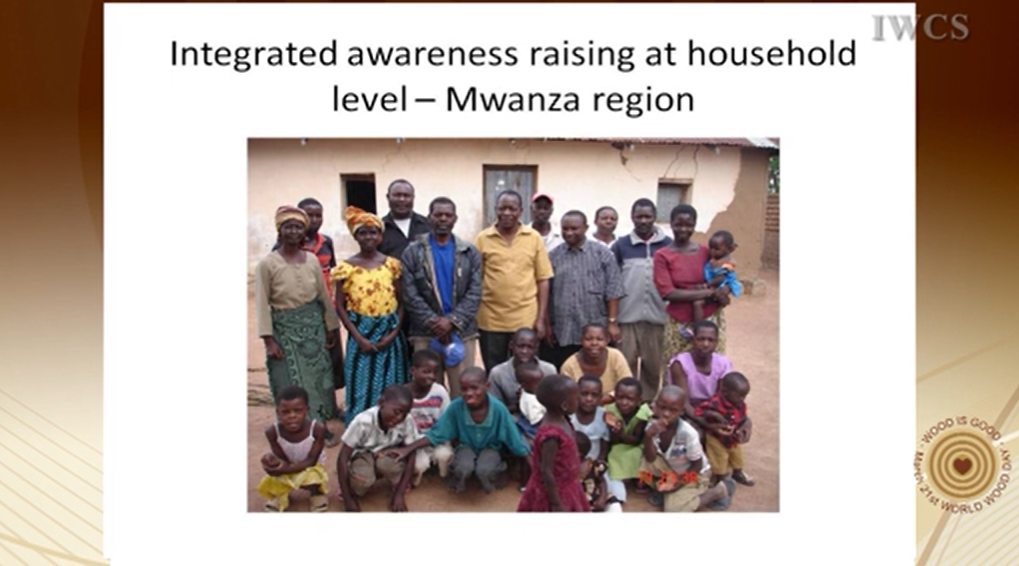会议名称:2014世界木材日研讨会
会议时间:3月21-22日
会议地点:福建·仙游 中国古典工艺博览城
报告人:Bariki Karosi Kaale
Chairperson of Tanzania Specialist Organization on Natural Resources and Biodiversity Conservation (TASONABI)
Deforestation and forest degradation are rapidly changing the natural landscape of Tanzania from forest and woodland cover to grassland devoid of trees. Annual deforestation rate in Tanzania is estimated to be around 412,000 hectares per year. Unsustainable biomass fuels (firewood and charcoal) that accounts for over 97% of the total wood products consumed in Tanzania are the main causes of deforestation with negative change to the country landscape.
Quantitatively biomass fuels accounts for over 91 percent of the total energy consumed in Tanzania while petroleum accounts for 7% and electricity for 2%. Various studies have concluded that use and dependency of biomass fuels in Tanzania is increasing in terms of people depending on biomass fuels also quantities of wood consumed. In 2013 the quantity of wood consumed was 87.2 million m3 while allowable annual cut was 46 million m3 hence creating a wood deficit of 41.2 million m3 that was obtained through over harvesting of the natural forests with negative impact to landscape and environmental degradation.
Opportunities of ensuring sustainable biomass supply in Tanzania and environmental conservation exists. The IWCS in collaboration with other stakeholders are creating awareness to the community on how to capture the existing opportunities for inclusive socio-economic growth.
Speaker Biography
Mr. Bariki Karosi Kaale, Chairperson of Tanzania Specialist Organization on Natural Resources and Biodiversity Conservation (TASONABI)
Mr. Bariki Karosi Kaale has extensive professional working experience of over 30 years in Africa and outside Africa on wood utilization, rural energy, environmental conservation including REDD + biofuels and community based natural resources management (CBNRM). His main focus has been on empowerment and facilitating pro-poor local communities to attain sustainable development through efficient use of wood resources and sound environmental conservation.
责任编辑:iwcs25Z/H


 4,261
4,261